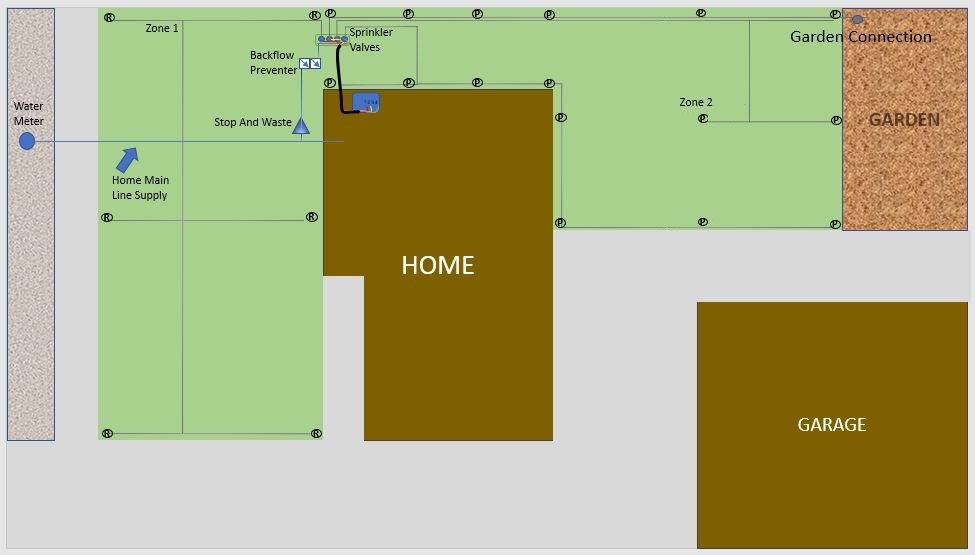
System Layout Example
- Residence
- Main Line
- Zone 1
- Zone 2
- Zone 3
- Stop and Waste
- Backflow Preventer
- Automatic Sprinkler Valves
- Pop-up Spray Sprinkler Head
- Rotor Sprinkler Head
- Drip Connection or Bubbler
- Wiring for Irrigation Valves
- Irrigation/Sprinkler Timer
This is an example of what the layout of a front yard sprinkler system may be like. The laterals are color-coded to avoid confusion.





















